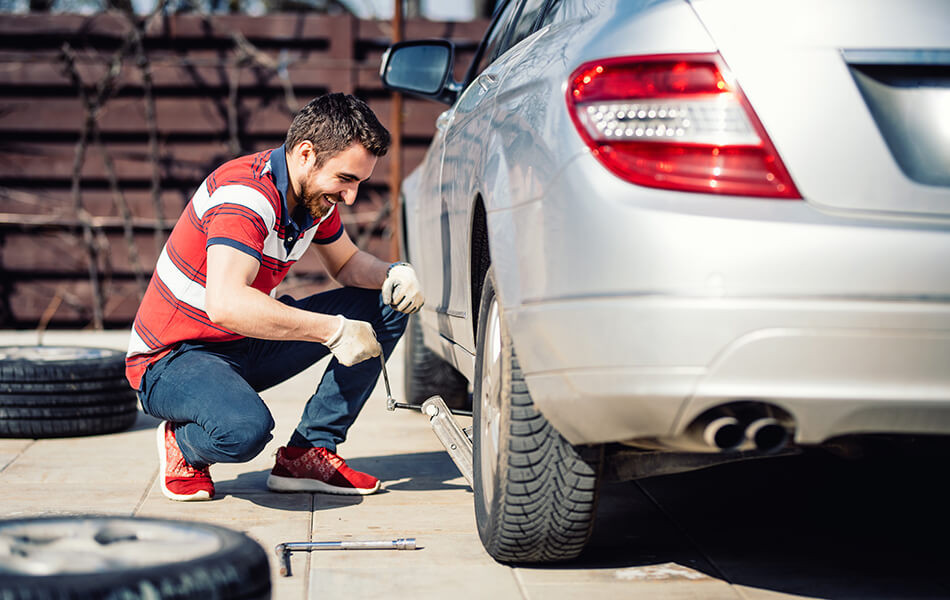Ah, flat tires … They’re annoying, they’re inconvenient, and the only way to deal with them is to confront them, head-on and immediately!
The whole situation can be a bit flustering, so we have compiled a list to help you in an event where you may need to change a flat tire ...
1. Find A Safe Place To Pull Over
This cannot be overstated—if you don’t feel safe changing a tire somewhere, drive until you find someplace that you DO feel safe. Get as far away from traffic as possible, and try to find somewhere level to park. Turn your hazard lights on and use reflective signs or flares to alert other drivers to your presence. Don’t forget to set the parking break, as well.
2. Locate Tools
If you don’t already know where to find them, consult your owner’s manual to determine where your tools and spare tire reside. Take all of them out (including the spare tire) so that they are easily accessible. Digging around in the trunk while your car is already lifted on the jack is both pointless and dangerous.
3. Loosen Lug Nuts
It is best to do this before you jack up the car, but make sure that you are only loosening them—not removing them completely. To loosen lug nuts, use your lug wrench and turn in a counter-clockwise direction (righty tighty, lefty loosey!). In order to equalize pressure, you will want to loosen them in a specific pattern, depending on how many are in your wheel. Use the following diagram for reference, every time you loosen or tighten the lug nuts.
4. Use Car Jack To Lift Car
It is extremely important to consult your owner’s manual to figure out where to position the car jack. The last thing you need is for the car to slip off of the jack, so make sure that you also wedge a brick or block of wood in front of or behind the wheel directly opposite of the one you’re lifting. For instance, if you need to replace the right back tire and you are parked on a surface that would cause the car to roll backward, you would stick the wedge behind the front left tire.
5. Finish Loosening The Lug Nuts
Once the car has been safely lifted (and you’ve made sure it isn’t going anywhere), giving you access to the flat tire, you can finish loosening the lug nuts. Make sure to put them somewhere safe so that they won’t roll away or become otherwise misplaced, especially if you’re operating in the dark.
6. Remove Flat Tire And Replace With Spare
Now, you should be able to carefully remove the flat tire. Make sure that you lay it down on its side so that it doesn’t roll away. Then, replace it with your spare tire and tighten the lug nuts by hand (you will tighten them again once the car is back on the ground).
7. Lower The Car (Still Not All The Way) and Tighten Again
Use the jack to carefully lower the car so that most of the weight is resting on the spare tire, then use your lug wrench to tighten the lug nuts again. After that, you can lower your car the rest of the way and tighten them a third time—this time, as tight as they will go.
8. Get spare tire replaced ASAP
Not kidding. Spare tires are meant to be temporary. They are not a permanent replacement for a real tire, nor do they perform as well.
No one likes to deal with flat tires, but its still best to know how to change one, just in case.
Hopefully, this list helped to clarify the process (or simply refresh your memory), and from all of us at Quick-Set, drive safely out there!

